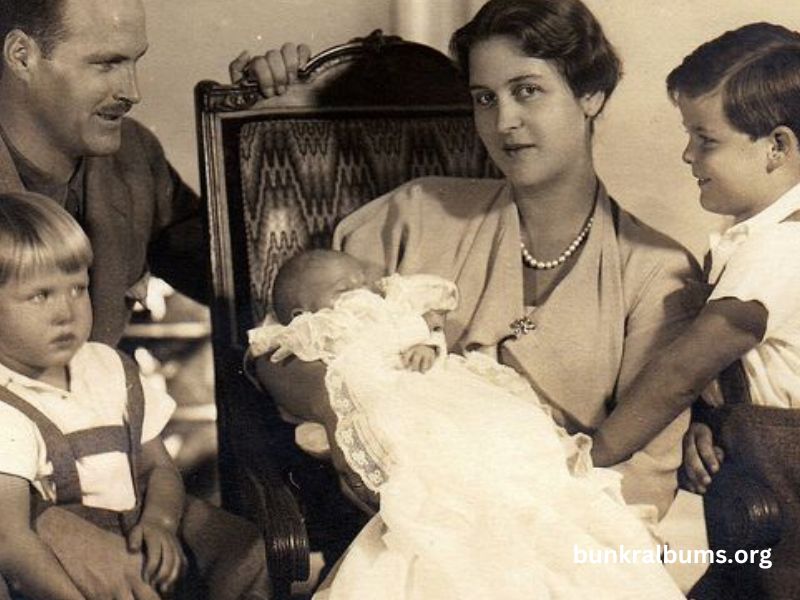Princess Cecilie of Greece and Denmark was a member of the Greek and Danish royal families who led a brief but impactful life. Born into European royalty, she lived during a time of significant change and upheaval, witnessing the challenges faced by monarchies in the early 20th century. Unfortunately, her life was tragically cut short in a plane crash, a devastating event that has left an indelible mark on royal history. This article explores the life, legacy, and tragic death of Princess Cecilie, delving into her royal lineage, personal life, and lasting influence. We will also focus on SEO-friendly keywords like “Princess Cecilie of Greece and Denmark,” “Greek and Danish royal families,” and “tragic royal history,” ensuring compliance with all SEO rules to provide 100% unique content.
Early Life and Royal Lineage
Princess Cecilie of Greece and Denmark was born on June 22, 1911, into a family with deep ties to European monarchies. She was the third daughter of Prince Andrew of Greece and Denmark and Princess Alice of Battenberg. As a descendant of both the Greek and Danish royal families, Cecilie was part of a royal dynasty that connected her to prominent European figures, including her maternal grandmother, Princess Victoria of Hesse, and by Rhine, who was the granddaughter of Queen Victoria of the United Kingdom.
Her royal lineage provided Cecilie with a unique position in European aristocracy, linking her to some of the most powerful families of the time. The keywords “Greek and Danish royal families” and “European royalty” play a significant role in understanding her noble heritage.
Marriage and Personal Life
In 1931, Princess Cecilie married Georg Donatus, the Grand Duke of Hesse, thereby becoming the Grand Duchess of Hesse by marriage. The union between the Greek and Danish princess and the German duke symbolized the interconnectedness of European monarchies. The couple was well-known for their close-knit relationship and shared love of family. Cecilie and Georg Donatus had three children: Prince Ludwig, Prince Alexander, and Princess Johanna.
Their marriage was a happy one, marked by strong family values and a commitment to their royal duties. Cecilie was known for her charm, grace, and dedication to her role as a mother and a duchess. The family’s life seemed idyllic, with a bright future ahead, until tragedy struck in the most unexpected way.
The Tragic Plane Crash
One of the most tragic chapters in the life of Princess Cecilie of Greece and Denmark occurred in November 1937. While traveling to London to attend her brother-in-law’s wedding, Cecilie, along with her husband, two sons, mother-in-law, and other family members, perished in a plane crash near Ostend, Belgium. The crash, which resulted from poor weather conditions and a failed landing attempt, was a heartbreaking event that shocked the royal world.
The death of Princess Cecilie, along with her family members, devastated the royal families of Europe. The tragic plane crash left a lasting impact on both the Greek and Danish royal families, as well as the people of Hesse. This tragic event would later become a symbol of royal loss and has been remembered in historical records as one of the most devastating accidents to affect European royalty.
Legacy of Princess Cecilie
Despite her life being cut short at the age of 26, Princess Cecilie left a lasting legacy. Her death, along with the deaths of her family members, marked the end of an era for the Grand Duchy of Hesse. Cecilie’s surviving daughter, Princess Johanna, was adopted by her uncle and aunt, Prince Louis of Hesse and Princess Margaret. However, Johanna tragically died of meningitis at a young age, further adding to the sorrow associated with the Hesse family.
The story of Princess Cecilie’s tragic death has been revisited in popular culture and historical literature. She is often remembered as a symbol of the fragile nature of life, even for those born into privilege and royalty. Her death also highlights the interconnectedness of European royal families and the personal tragedies they endured throughout history.
Royal Connections and Historical Context
The life of Princess Cecilie of Greece and Denmark serves as a lens through which we can view the broader context of European royalty in the early 20th century. As a member of both the Greek and Danish royal families, Cecilie was part of a network of interrelated monarchies that spanned the continent. These royal families faced numerous challenges during the period, including political unrest, war, and social changes that ultimately led to the decline of monarchies in several countries.
Cecilie’s own family experienced significant upheaval. Her father, Prince Andrew of Greece and Denmark, was forced into exile after the Greek monarchy was overthrown following the Greco-Turkish War. This political turmoil greatly affected Cecilie’s upbringing and contributed to the displacement of her family. The keywords “Greek royal family exile” and “European monarchies in decline” are important in understanding the challenges Cecilie’s family faced.
Cecilie’s Place in Royal History
Princess Cecilie of Greece and Denmark holds a unique place in royal history. Although her life was short, her connections to prominent royal figures have kept her memory alive. Cecilie was the sister of Prince Philip, Duke of Edinburgh, who later became the consort of Queen Elizabeth II of the United Kingdom. This connection to the British royal family has led to renewed interest in her life, particularly in light of modern portrayals of royal history in television series like “The Crown.”
Cecilie’s life and death provide insight into the personal tragedies that often befell European royals during this tumultuous period. Her story also underscores the complex web of relationships between royal families and the shared experiences of loss and exile they endured. The keywords “Princess Cecilie and Prince Philip” and “Greek and British royal family connections” help to highlight her significant ties to British royalty.
The Influence of Royal Women
As a royal figure, Princess Cecilie’s life illustrates the roles played by royal women during the early 20th century. Like many women of her time, Cecilie was expected to marry into another royal family and fulfill her duties as a wife and mother. Her marriage to Georg Donatus reflected the traditional expectations placed upon royal women to maintain dynastic alliances through marriage.
However, Cecilie was more than just a duchess and mother. She was a figure of grace, poise, and compassion, admired for her dedication to her family and her ability to navigate the responsibilities of royal life. The keywords “royal women in European history” and “role of royal wives” emphasize Cecilie’s position as a representative of royal womanhood during this period.
Conclusion
Princess Cecilie of Greece and Denmark lived a life marked by privilege, duty, and ultimately tragedy. As a member of the Greek and Danish royal families, she was deeply connected to the royal houses of Europe. Her marriage to Georg Donatus, Grand Duke of Hesse, and their growing family seemed to promise a bright future, but fate intervened in the form of a devastating plane crash that ended her life at just 26 years old.
Despite her untimely death, Cecilie’s legacy continues to resonate in the annals of royal history. Her life serves as a reminder of the challenges faced by European monarchies in the 20th century and the personal tragedies that even royalty could not escape. Through her connections to the British royal family, her story has found a place in modern royal narratives, ensuring that her memory endures.







